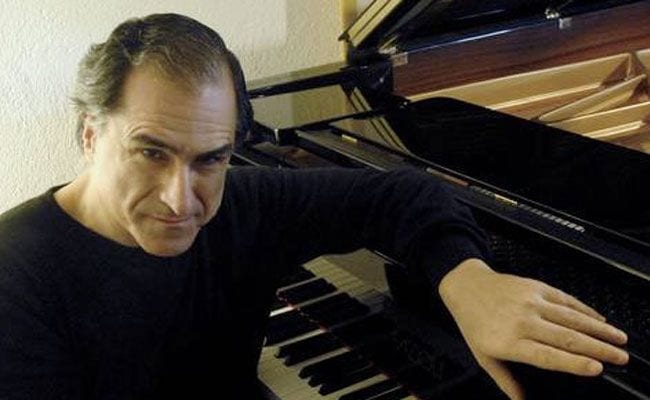
First thing’s first, this is an album of previously released material. Around the time of 2001 and 2002, Italian pianist Enrico Pieranunzi’s trio with bassist Marc Johnson and drummer Joey Baron recorded two albums of Ennio Morricone covers simply named Play Morricone and Play Morricone, Vol. 2. The Cam Jazz label has combined the two albums and gave it an equally flat name: Play Morricone 1 & 2. The running order of the first volume may be jumbled (it’s hard to tell with so many online sources) and the liner notes were hastily translated from Italian to English. But it also comes with a few extra lives tracks, giving you close to two-and-a-half hours of sweet piano-trio jazz music. In terms of overall packaging, you can call it a draw. Now, let’s get down to what matters most, which is the music.
The trio of Pieranunzi, Johnson and Baron goes all of the way back to 1984, yet they have not recorded much together over the years. After their initial success together, Baron and Johnson became in-demand sidemen stateside while Enrico Pieranunzi developed his growing reputation within his home country. But even when considering how much time they spent apart, the trio that recorded these two albums show no signs of incompatibility or lost momentum. Given that each CD lasts over 71 minutes, most of Play Morricone 1 & 2 winds up being consistent almost to a fault. These guys are simply too proficient on their instruments to create something distracting and/or ugly. Besides, performances like this are best appreciated live. And by live, I actually mean in-person and not a live recording. With this double album, you get to focus on the source material, and an Ennio Morricone tune is rarely anything short of a treat. Of the 24 tracks here, nearly all of them are Morricone covers (there are few Pieranunzi originals on the second volume that are probably an homage to the composer in some way or another). In an acoustic trio ensemble, the indelible mark of an Ennio Morricone tune gets rolled away into flawless piano runs with some snappy ticks of the ride cymbal for good measure. You can’t really call it obscuration or obfuscation. It’s more like the guy who can’t turn off his jazz hands.
No, that’s not 100% true. The Play Morricone albums have their elegiac moments, and they’re damn fine ones too. “Mio Caro Dottor Gräsler (The Bachelor)”, “Jona Che Visse Nella Balena (Jonah Who Lived in the Whale)” and “Ninfa Plebea” are perfect encapsulations of that candlelight atmosphere. Even the first volume’s opener “Addio Fratello Crudele (It’s a Pity She’s a Whore)”, which rides on a soft shuffle, plays up its light melody in a manner that can make the listener forget about the trappings of “jazz”. These moments are outnumbered by the fun, snappy ones, staking a hard bop claim on the material.
And that translates well in-concert. “Nuovo Cinema Paradiso” and “Musashi” were both recorded at a Tokyo performance in 2004, even though there is no crowd noise. Marc Johnson, in particular on the latter tune, pulls off some bass licks that I didn’t know were possible on an upright. The three musicians feed off one another in a way that would make Bill Evans, Scott LaFaro and Paul Motian all give thumbs up in their graves, if they could. But Play Morricone and Play Morricone 2 are still mannered albums, and Pieranunzi’s rendition of “Il Clan Dei Siciliani [The Sicilian Clan]” isn’t going to make me forget about John Zorn’s version anytime soon. On the other hand, is that really fair? Nah.

